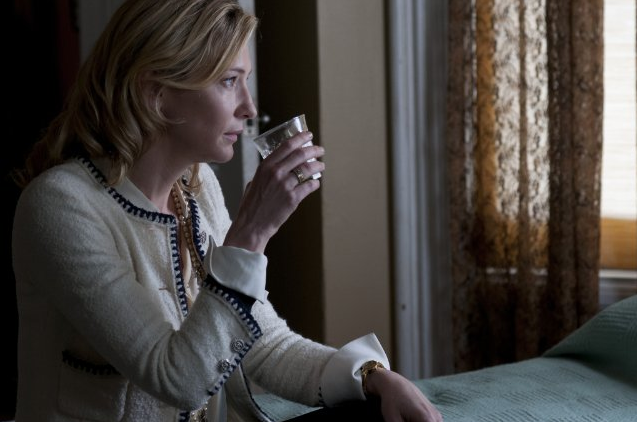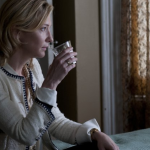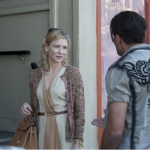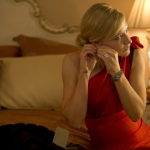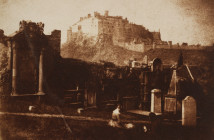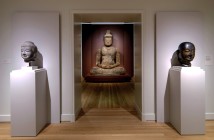In the opening scene Manhattan, Woody Allen’s 1979 romantic comedy, George Gershwin’s Rhapsody in Blue plays as the voice of the protagonist, played by Allen, describes the uniqueness of New York City. On the screen, the City is depicted in black and white, celebrating the glamour, the intricacies, and ultimately the beauty of the town that the filmmaker and the character he plays both love so much. This scene is a valuable insight into Allen’s architectural tastes and admirations. It is also a great testament to the filmmaker’s sensitivity to the importance of architectural space in furthering his work as a storyteller.
In his most recent film, Blue Jasmine, Allen uses interior architectural settings as a central motif throughout the film to illustrate the harsh dichotomy between two unlike sisters representing the rich and the poor, and further, between high and low art. The architecture takes central stage as a storytelling aid that enlivens every scene.
The film, a thinly veiled homage to A Streetcar Named Desire, depicts the sisters Jasmine and Ginger, who represent the polar opposites of high and low class. Jasmine is the ex wife of a once successful investor from New York. She moves to California to seek shelter with her working class sister after the embarrassments that arise from her husband’s illicit business deals, which landed him in jail and her selling shoes.
As much as their personalities differ, the polarity of the relationship between the sisters is seen most acutely in their respective environments. Jasmine, a beautiful and put together blonde played expertly by Cate Blanchett, is shown in her former life through flashbacks throughout the film. Her digs include a plush New York apartment with a view of Central Park and the finest finishes. It is the definition of sumptuous excess.
Additionally, the titular sister is depicted several times in the varying vacation homes she shares with her husband, played by the well cast Alec Baldwin. These include a stunning beach home complete with an infinity pool and a rustic but beautiful country escape. Their life is defined not only by comfort, but also by variety.
Jasmine’s comparatively frumpy brunette sister Ginger, played by the mousy Sally Hawkins, lives in a single cramped apartment with two sons from her ex husband. While Jasmine is associated with rich New York interiors in her previous life, Ginger’s San Francisco walk-up represents a palpable downgrade and an entirely different way of living.
Located above a neighborhood bar, Ginger’s apartment is tiny in comparison to what her sister is used to. Painted a single tone of beige throughout, and plastered with kitschy items and houseplants, the apartment is also the antithesis of Jasmine’s Park Avenue style. Moreover, the spaces outside Ginger’s home are no better. Where Jasmine is depicted in splendid vacation homes, Ginger is shown visiting her ex at his apartment complex, which equals her home in dilapidation.
Their respective architectural surroundings are inextricably linked to the sisters’ personalities and to themes of class and culture at large. At times throughout the film the overlap of their relationship requires that Ginger be present in the posh surroundings of Jasmine and vice versa. Jasmine has to live and work in subpar places in San Francisco after her crack up. Ginger is shown visiting Jasmine’s Manhattan apartment and shopping in a luxury retailer before things went bad for her brother-in-law. The discomfort of the mismatch in both cases is visceral.
Allen’s understanding of the deep relationships between people and the spaces they inhabit is palpable. The film illustrates with acuity the ways in which architecture reflects success, class, or a change of life. When the moneyed elite are divorced of their beach homes or penthouses their comparative glamour wanes, and we wonder what we found so attractive about them in the first place.
The film also draws corollaries between place and stability. When Jasmine at home she is poised, elegant, and beautiful. Removed from those surroundings, her veneer begins to crack and she begins to relapse into a mental instability that seems as if it has been a lifelong struggle only quieted for a moment by the beauty of her old surroundings, now lost for good.
The film’s use of architecture, in tandem with great performances, strengthens the story and underlines the chasm of difference between the ultra rich and their counterparts living above bars in bad neighborhoods. The imagery used in the film outlines disparities of all kinds and reinforces the strange ways in which material possessions, including real estate can affect their owners’ personalities for good and bad. Allen successfully draws on architecture again not only as a backdrop, but as a supporting character in the telling of a story that is at points tragic and at others hilarious. Because of this, Blue Jasmine eventually becomes a film as much about architecture as about the human characters it depicts.
- Jasmine in Ginger’s Apartment (Image via IMDB, (c) Sony Pictures Classics)
- Ginger in Jasmine’s Apartment (Image via IMDB, (c) Sony Pictures Classics)
- Jasmine’s Beach House (Image via IMDB, (c) Sony Pictures Classics)
- Jasmine at Ginger’s Door (Image via IMDB, (c) Sony Pictures Classics)
- Jasmine at Home in New York (Image via IMDB, (c) Sony Pictures Classics)

